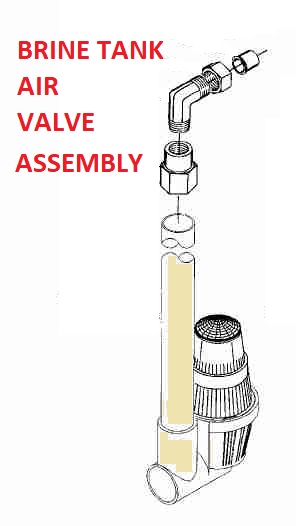Watch for malfunctioning water softening equipment.
Water softener drain field.
The discharge from a water softeners regeneration will damage my septic system or drain field in studies conducted by scientists in the late 1970 s at the university of wisconsin it was confirmed that salt brine discharge from water softeners caused no problems in the operation of typical anaerobic or newer style aerobic home treatment.
Finally it was feared that the salt brine produced by the softener would hamper the drainage field s ability to absorb water and affect bacterial populations.
By code water softeners must be emptied into a laundry sink floor drain sump hole or properly trapped special outlet preserving an air gap of at least two times the diameter of the drain line but in no case less than 1 1 2 above the top of the.
The discharge was no more or less than that of any other household water using appliance.
This causes two problems.
This is a large surge load which can upset the settling process in the tank.
A water softener dumps from 50 gallons to 100 gallons of water into the system when it regenerates.
The max gpm dlfc for a large residential softener would not be more than 5 gpm.
One problem is that the septic tank discharges solids into the drainfield which can cause the soil to plug and the drainfield to fail.
We have seen a septic drainfield completely flooded by a water softener that stuck in it s backwash cycle.
There s also the concern that the hardness ions can disrupt your drain field s absorption.
A water softener does not pose a problem for your beloved septic system.
One concern with water softeners and septic systems is that the amount and flow rate of the brine discharge can overflow a septic tank and back up the drain field.
When the water softener resin is backwashed two or three times a week concentrated brine enters the wastewater stream as a slug of 38 to 112 gallons each backwash cycle.
A study commissioned in 2012 by the water quality research foundation reported that brine discharge from well operated water softeners 50 gallons per regeneration showed no overflow.
This is to prevent non potable water from flowing backwards possibly mixing and contaminating potable drinking water.
If you hear water running continuously in your drain you should track down the source to a leaky toilet tank faucet or malfunctioning water softener etc.
All softeners have a dlfc drain line flow control it controls limits the max gpm flow to drain.
Most won t flow more than 2 7 gpm.
Well we have some good news.
According to most plumbing codes a water softener drain line must not be connected directly to the household waste system.
This assumption was based on agricultural studies of irrigation systems with a high sodium content.

